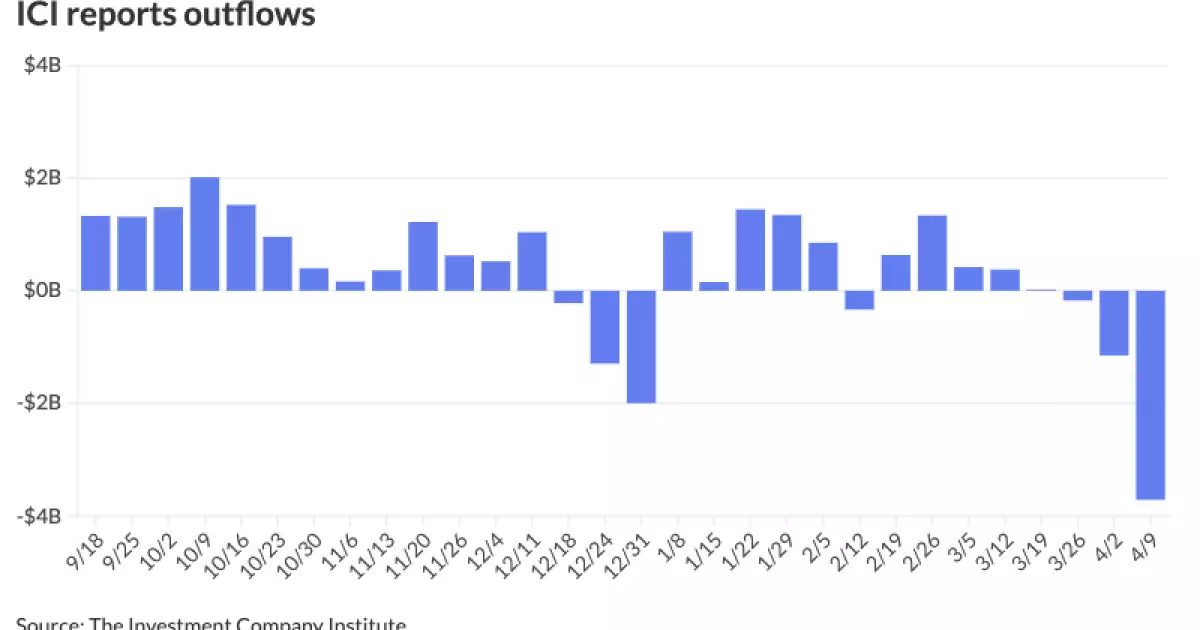After a tumultuous period characterized by rising volatility, the municipal bond market is observing signs of stabilization. The fluctuations witnessed in bond prices and yields, particularly in relation to U.S. Treasury (UST) securities, have set a stage for recalibrated investor expectations. The minor gains in prices showcase not just opportunistic buying but also reflect the emerging trends conducive to reclaiming confidence among investors. This sentiment comes in the wake of the recent feed of concerning data points, which reveal that larger outflows from municipal funds have been emerging. Despite last week’s volatility, signs of healing in the market indicate that investors may soon regain a footing on the path toward the elusive balance in return and risk.
The Yields That Steer Investor Decisions
Investment decisions in the municipal market hinge heavily on yield ratios. Recent statistics show the two-year municipal yield ratio has been reported at 80%, while the three-year trail appears at 81%—metrics that lack the vibrancy they once boasted. This issue of falling yields stands in stark contrast with the burgeoning opportunities presented by higher yield sets amid a selling treasury backdrop. Municipal bonds must become more attractive than Treasuries to draw serious investor interest. This makes the projected influx of competitive sales from A-rated bonds across states like North Carolina and Maryland all the more significant.
While North Carolina and Anne Arundel County showed stability during competitive sales, previous auctions evoked wider spread concessions, suggesting that investors were initially skittish about diving into the stormy waters of the market. Now, though, the return of yield dislocations appears to kindle bidding interest—a crucial sign for a recovering municipal landscape.
Impending Supply and Investor Sentiment
In the months leading to tax day, investors have clearly been reshaping their portfolios for better yields. The anticipated robust pipeline from states like Connecticut and Massachusetts, which plan to issue bonds exceeding $1 billion, raises critical questions about market absorption capacity. As the supply of municipal bonds is set to increase, analysts and traders alike are focused on discerning how the market can efficiently distribute this new influx without losing traction.
Analysts argue that although the yields may offer incentives for higher-quality bonds, there needs to be a concerted effort to address the broader distribution challenges associated with such supply. The presence of a strong and diverse investor base is paramount. Hence, traders and institutions must not only raise awareness but also actively engage to ensure that different risk appetites are met seamlessly.
Rising Demand for Short-Term Bonds
The one-year and five-year municipal yields have been among the most discussed lately, with notes yielding about 3.00% and 3.25% respectively. As a result, short-term bonds appear to be enjoying a renaissance of sorts, especially for top-bracket buyers who are aiming for tax-equivalent yields surpassing 5.00%. The clear advantage offered here is not to be overlooked, especially as fund redemptions are prompting investors to reconsider their strategies.
At a fundamental level, the option of short-duration bonding allows for liquidity as well as capital preservation, making them suitable for the current uncertain climate. Municipal issues, particularly in the ultra-short maturity ranges, have thus had their yields elevated, providing compelling reasons for investors to rethink their strategies, leading to a structural change in preferences in the near term.
Notable Trends in Pricing Structures
The data indicates that as we delve deeper into new municipalities requests, there seems to be stabilization, with an increase in CUSIP requests despite a minor dip month-over-month. Texas and California have emerged as frontrunners for new requests, signaling healthy interest from institutional and retail investors. However, one must question whether the upward trend in municipal volumes can be sustained if volatility remains a persisting theme.
With ratios revisiting highs and capabilities approaching those last seen around mid-2022, buyers are positioned strategically on high-grade issues. The enhanced yield structures present here illustrate how competitive procurement can alter the perception of risk. Investing in these municipal bonds will thus not just be a matter of chasing current yield but a recalibration of expectations regarding future gains.
Financial Sentiment vs. Market Realities
In light of the stronger yields now available, one cannot ignore the overarching sentiment that has recently plagued the Treasury market. As yields responded positively to anticipated increases, institutions must work smarter to differentiate between nominal gains and structural financial health. Even as traders embrace yields as their friend, they must tread carefully, as the road to normalcy is fraught with complexities that need astute navigation.
This juxtaposition of positive financial sentiment against macroeconomic realities does raise critical concerns about sustainability. It mandates that market participants remain vigilant and adapt their investment strategies to a landscape that is ever-evolving. As the municipal bond market attempts to strike a balance between competing demands and external conditions, the path forward seems to necessitate a more thoughtful approach. In short, while the outlook may seem promising, it is imperative to consider the nuances of market forces at play.

